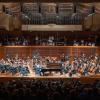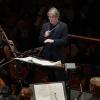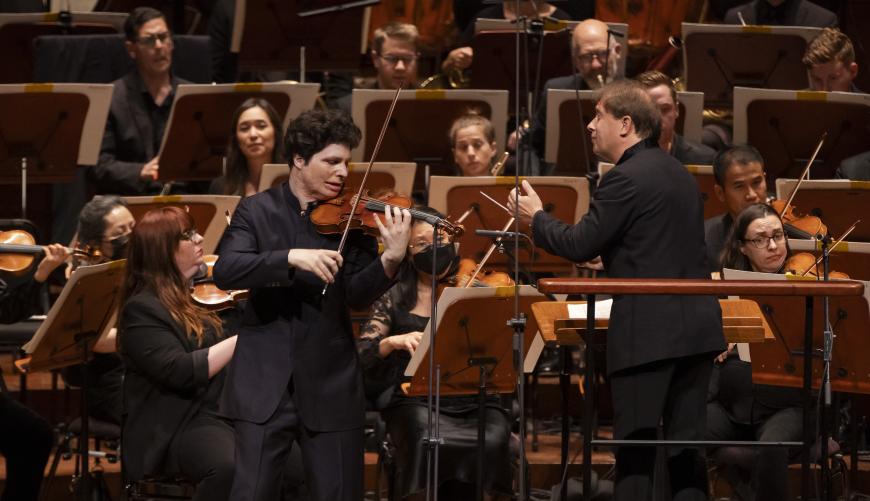
There can be only one Brahms Violin Concerto, but boy, did Antonín Dvořák try to compose a second. Maybe it was because he was writing for Joseph Joachim, the great violinist who had collaborated with the elder composer on his concerto, that Dvořák’s first movement takes great pains to sound stern. “Be yourself,” you want to tell Antonín. And, by the third occurrence of ma non troppo (but not too much) in the score, “Make a decision.”
It’s in the Finale, which juxtaposes two Bohemian dances, that Dvořák comes into his own — and it was the best part of the San Francisco Symphony’s performance on Thursday. But soloist Augustin Hadelich, the embodiment of decency in art, made the case for the entire piece. Always, he gives the illusion of “just” playing the music — when often it’s he who makes the music worthy of being played.
To be heard over the orchestra, a soloist must break up Dvořák’s long phrase markings somewhere, yet when Hadelich plays, you can’t tell where he’s changed bow strokes, even though he might take four of them in a place where only one is marked. He makes the most perfunctory figuration sound spontaneous. Above all, his technical work never leaves you cold. Like yellow gold, his sound gleams with warmth.
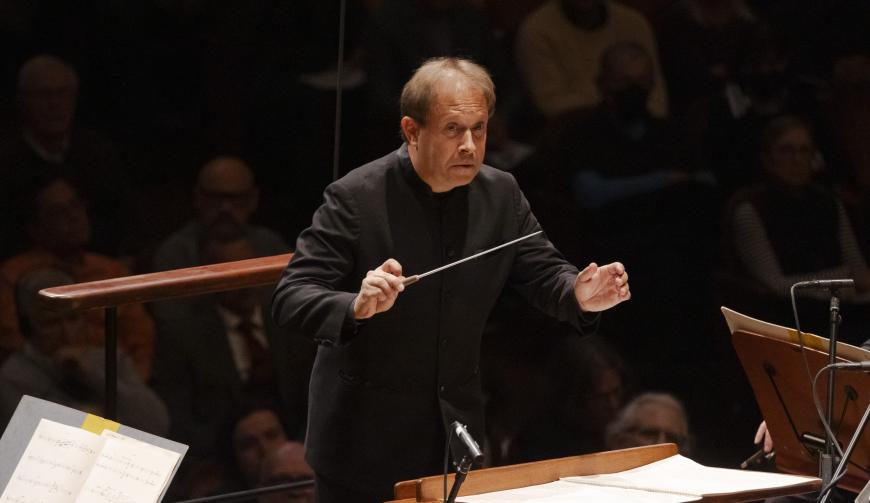
Too bad, then, that under the baton of Ludovic Morlot (now music director of the Barcelona Symphony Orchestra after an eight-year tenure with the Seattle Symphony), some of Hadelich’s most magical landings were beset by sloppy entrances. It was the first night, the orchestra was a rehearsal short, and they were always late.
Modest Mussorgsky’s Pictures at an Exhibition (orchestrated by Maurice Ravel) came off well, though — no matter that it would take a disaster for this music not to. And newly commissioned art displayed in Davies Symphony Hall, filling in the gaps where the original sketches by Mussorgsky’s friend Viktor Hartmann haven’t survived, enhanced the listening experience.
In fact, the best performances were of the movements accompanied by Liz Hernández’s drawings. Looking at naive woodcut-style children made listening to the singsong “Tuileries” more fun. Piercing wind and brass solos formed imposing crenellations in “The Old Castle.” The beginning of “Catacombs” could have used more roar, but the majesty of the finale, “The Great Gate of Kiev,” reverberated through the lobby, where Fernando Escartiz had mounted a magnificent Mayan-inspired arch.
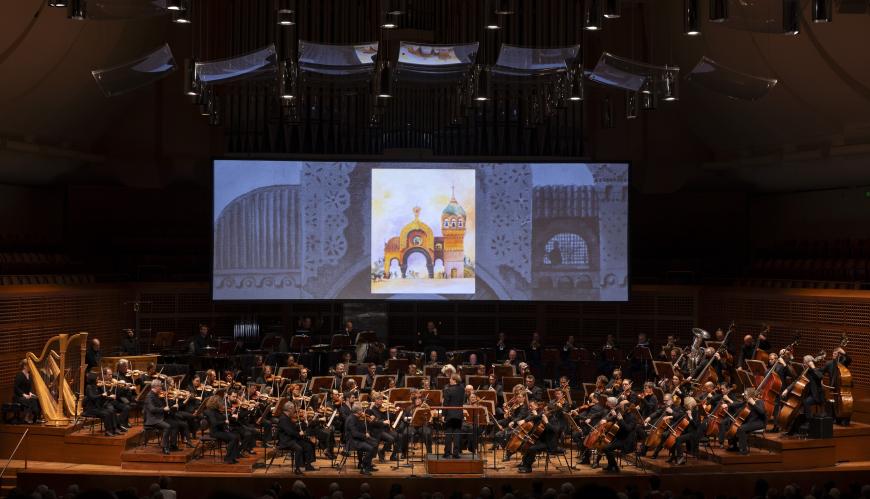
In Latest, an SF Symphony co-commission that opened Thursday’s program, composer Betsy Jolas throws us off the deep end. Indeed, hearing the piece for the first time is like squinting at a coral reef, with countless colors whose borders, at least from this side of the water, remain indistinct.
It’s a lot to take in. Born in Paris in 1926 — the same year as modernist icons Morton Feldman and John Coltrane — Jolas studied with Darius Milhaud and Olivier Messiaen and corresponded with Pierre Boulez and Elliott Carter. She’s had a long and rich career, spanning dozens of orchestral pieces, a handful of operas, and a large body of choral works, too few of which we’ve heard.
Latest’s stop-start gestures accumulate into a gorgeously atonal soundscape — one in which listeners could drift. There were no program notes, but Jolas’s comments for a different premiere bear repeating: “I am now, at 96, practically the last of my generation, since most of my great colleagues have now, alas, left this world. I happen to have known personally many of them well. … [But] I never became a disciple of any of them.”



